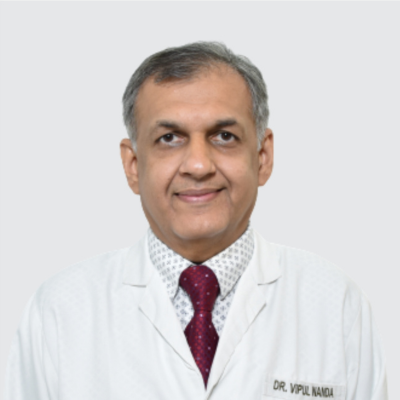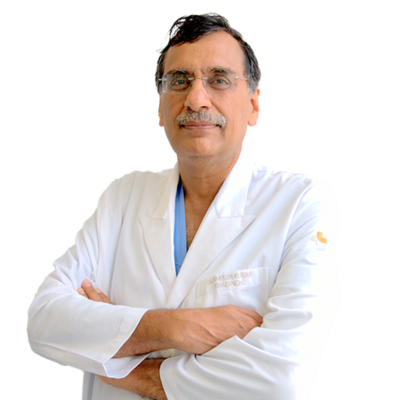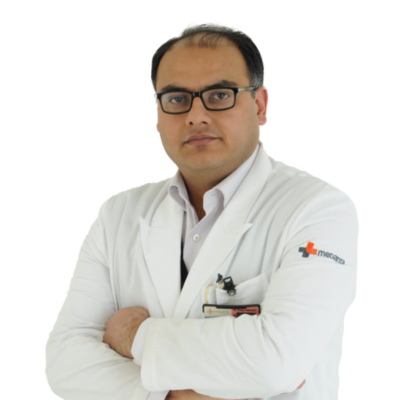Liver Transplant: Types, Procedure, and Documents Required
 30 September,2024
Read More
30 September,2024
Read More
Enquire now in case of any assistance needed
Skin Rejuvenation and Resurfacing Treatment Cost in India is between USD 120 - USD 200
Hospital Days: 1
Procedure Duration: 30 Min - 50 Min
Skin rejuvenation and resurfacing are transformative cosmetic procedures designed to enhance the texture, tone, and overall appearance of the skin. These treatments aim to address common concerns such as wrinkles, fine lines, uneven pigmentation, and skin laxity. Through various non-surgical or minimally invasive techniques, including chemical peels, laser therapy, microdermabrasion, and microneedling, these procedures stimulate collagen production, remove damaged outer layers, and promote healthier, more youthful-looking skin. Tailored to individual needs, skin rejuvenation and resurfacing have become popular choices for those seeking a refreshed and revitalized complexion without the need for extensive downtime or surgery.
Skin rejuvenation and resurfacing procedures offer a multitude of benefits that address common aesthetic concerns and promote overall skin health. Let’s explore why individuals may consider these treatments
Skin rejuvenation and resurfacing procedures offer a safe and effective way to address a wide range of skin concerns, restore skin vitality, and enhance overall appearance, helping individuals achieve healthier, more youthful-looking skin and improved self-confidence.
Skin rejuvenation and resurfacing encompass various techniques aimed at improving the appearance and texture of the skin. Common types include:
Patients should consult with a qualified skincare professional to determine the most suitable skin rejuvenation and resurfacing treatment based on their skin type, concerns, and treatment goals.
Several factors influence the cost of skin rejuvenation and resurfacing treatments, including:
Patients should consult with their healthcare provider to obtain a personalized cost estimate based on their individual needs and the specific treatment plan recommended. It's essential to consider the overall value of the treatment, including the provider's expertise and the quality of care provided, when evaluating the cost of skin rejuvenation and resurfacing treatments.
Patients are selected for skin rejuvenation and resurfacing based on several factors to ensure safe and effective treatment outcomes. Here's how patients are typically evaluated:
Diagnostic Tests and Evaluations Performed to Determine the Need for skin rejuvenation and resurfacing
To determine the need for skin rejuvenation and resurfacing treatments, healthcare providers typically conduct several diagnostic tests and evaluations to assess the patient's skin health and identify specific concerns. Here's an overview of the diagnostic process:
Skin rejuvenation and resurfacing treatments offer numerous benefits for improving skin texture, tone, and appearance, but they also carry certain risks. Here's a discussion of the risks and benefits associated with these procedures:
Benefits of skin rejuvenation and resurfacing
Risks of skin rejuvenation and resurfacing:
Recovery and Rehabilitation after deep skin rejuvenation and resurfacing
Recovery and rehabilitation after deep skin rejuvenation and resurfacing treatments typically involve several stages and considerations to promote optimal healing and minimize complications. Here's what patients can expect during the recovery process:
Proper post-treatment care and adherence to the healthcare provider's instructions are essential for successful recovery and optimal results after deep skin rejuvenation and resurfacing treatments. With patience, diligence, and appropriate skincare, patients can achieve smoother, more youthful-looking skin and maintain their results over the long term.
After undergoing skin rejuvenation and resurfacing treatments, whether through procedures like laser therapy, chemical peels, or microdermabrasion, patients can anticipate a series of experiences during the post-treatment period. Here's what to expect:
It's essential to consult with a qualified skincare professional before undergoing any skin rejuvenation or resurfacing treatment to understand the specific post-treatment care requirements and ensure optimal results. Additionally, open communication with the provider is key to addressing any concerns or questions that may arise during the recovery process.
Skin rejuvenation and resurfacing encompass various procedures aimed at improving the skin's texture, tone, and overall appearance. The choice of method depends on factors such as the patient's skin type, concerns, and desired outcomes. Here's an overview of common skin rejuvenation and resurfacing techniques:
The specific procedure chosen depends on individual needs and goals. Consultation with a qualified skincare professional is essential to determine the most suitable approach and ensure optimal results with minimal risk.
Chairman
Cosmetic Surgeon
Medanta - The Medicity Hospital, Gurgaon
View Doctor Profile Book an AppointmentVice Chairman
Cosmetic Surgeon
Medanta - The Medicity Hospital, Gurgaon
View Doctor Profile Book an AppointmentDirector
Cosmetic Surgeon
Medanta - The Medicity Hospital, Gurgaon
View Doctor Profile Book an AppointmentAssociate Director
Cosmetic Surgeon
Medanta - The Medicity Hospital, Gurgaon
View Doctor Profile Book an AppointmentSenior Consultant
Cosmetic Surgeon
Medanta - The Medicity Hospital, Gurgaon
View Doctor Profile Book an AppointmentDoctor of Pharmacy
Dr. Deepanshu Siwach is a skilled clinical pharmacist with a Doctor of Pharmacy degree. He has 4+ years of experience and has worked with thousands of patients. He has been associated with some of the top hospitals, such as Artemis Gurgaon and Teerthanker
Dr. Deepanshu Siwach is a skilled clinical pharmacist with a Doctor of Pharmacy degree. He has 4+ years of experience and has worked with thousands of patients. He has been associated with some of the top hospitals, such as Artemis Gurgaon and Teerthanker...
With over 23 years of experience, Dr. Vipul Nanda, an eminent Plastic and Cosmetic Surgeon, excels in surgical and non-surgical procedures, including filler, mesotherapy, laser, and dermatology....
Skin rejuvenation and resurfacing treatments vary in duration depending on the specific procedure and the extent of treatment required. Non-invasive procedures such as chemical peels or microdermabrasion may take 30 minutes to an hour per session. More intensive treatments like laser resurfacing or microneedling may require longer sessions, typically lasting between 1 to 2 hours.
The success rate of skin rejuvenation and resurfacing treatments varies depending on the specific procedure, patient factors, and adherence to post-treatment care. Generally, these treatments are associated with high patient satisfaction and can effectively address various skin concerns, such as wrinkles, uneven texture, and pigmentation issues. However, individual results may vary, and multiple sessions may be needed for optimal outcomes.
The recovery process for skin rejuvenation and resurfacing treatments depends on the type and intensity of the procedure. Patients may experience redness, swelling, and peeling in the treated area for several days to weeks. Following post-treatment instructions provided by the provider, including gentle skincare and sun protection, is essential for a smooth recovery and optimal results.
After skin rejuvenation and resurfacing treatments, patients may experience mild discomfort, redness, or stinging sensations in the treated area. Pain management options may include over-the-counter pain relievers, topical numbing creams, or prescribed medications, depending on the individual's pain tolerance and the intensity of the treatment. Patients should follow their provider's recommendations for pain management to ensure comfort during recovery.
The time it takes to return to normal activities after skin rejuvenation and resurfacing varies depending on the type and intensity of the treatment. Generally, patients can resume regular activities within a few days to a week, but sun exposure should be minimized, and strenuous activities avoided during the initial healing period to optimize results and prevent complications.
Physical therapy is typically not required after skin rejuvenation and resurfacing treatments, as these procedures primarily target the skin's surface layers and do not involve extensive tissue manipulation. However, patients may benefit from gentle skincare practices and sun protection measures to support healing and maintain optimal results. Consult with your provider for personalized post-treatment care recommendations.
The duration of skin rejuvenation and resurfacing results varies depending on factors such as the specific treatment performed, skin type, and individual lifestyle factors. While some treatments offer immediate results that may last several months, others, such as laser resurfacing or microneedling, may provide longer-lasting improvements that can persist for one to several years with proper skincare maintenance.
In most cases, cosmetic skin rejuvenation and resurfacing treatments are considered elective procedures and are not covered by health insurance. These treatments are typically performed for aesthetic purposes rather than medical necessity. However, some procedures may be partially covered if deemed medically necessary to address specific dermatological conditions. Patients should check with their insurance provider to determine coverage eligibility.
After skin rejuvenation and resurfacing treatments, patients may need to make temporary lifestyle changes to support healing and optimize results. These may include avoiding direct sun exposure, using gentle skincare products, adhering to post-treatment instructions provided by the provider, and avoiding smoking and alcohol consumption, which can impair healing and compromise treatment outcomes.
Yes, there are alternative treatments to surgical skin rejuvenation and resurfacing procedures. Non-invasive options include chemical peels, microdermabrasion, laser therapy, and microneedling, which can address various skin concerns such as wrinkles, uneven texture, and pigmentation issues. These alternatives offer less downtime and minimal risk compared to surgical procedures, making them suitable options for individuals seeking non-surgical skin improvement.
Traditional skin rejuvenation and resurfacing procedures are performed manually by the provider using handheld tools or devices, whereas robotic-assisted procedures utilize advanced robotic technology to perform precise treatment. Robotic systems offer enhanced precision, allowing for more controlled and consistent results. However, both approaches aim to improve skin quality and address various concerns such as wrinkles, scars, and pigmentation irregularities.
After skin rejuvenation and resurfacing treatments, patients are advised to avoid vigorous exercises that may increase sweating or cause friction in the treated area. Gentle activities such as walking or light stretching are generally acceptable and can promote circulation and healing. However, specific exercise recommendations may vary depending on the individual's treatment plan and postoperative instructions provided by their provider.
The Art of Effective Communication
 30 September,2024
Read More
30 September,2024
Read More
 27 September,2024
Read More
27 September,2024
Read More
 26 September,2024
Read More
26 September,2024
Read More
 25 September,2024
Read More
25 September,2024
Read More
 23 September,2024
Read More
23 September,2024
Read More
 20 September,2024
Read More
20 September,2024
Read More





